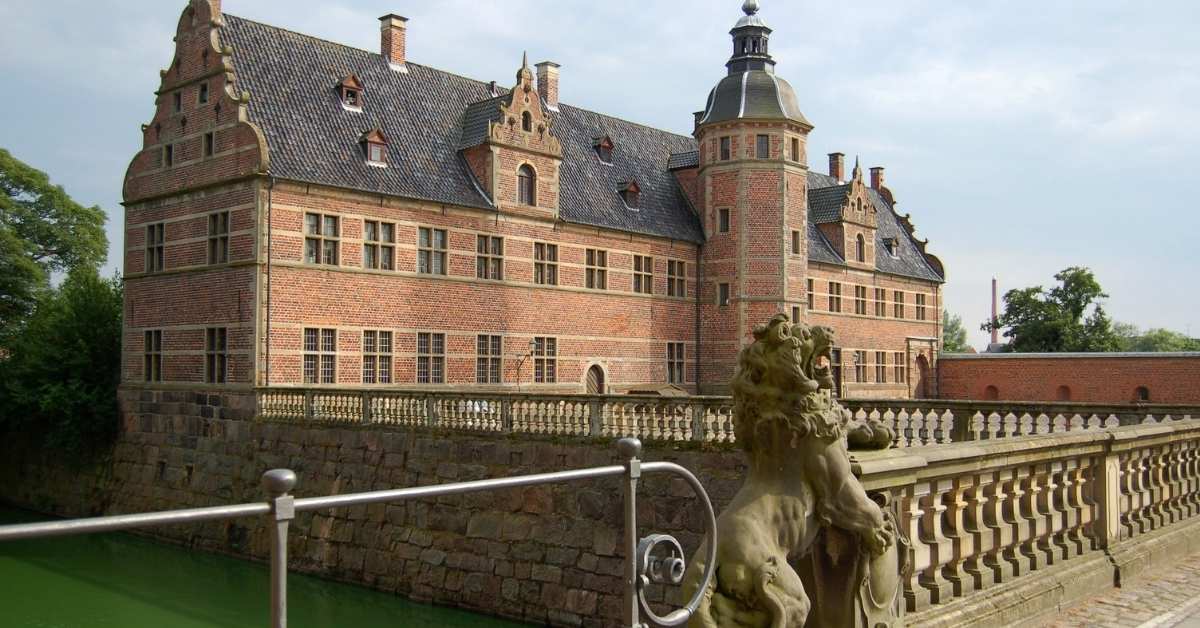Denmark is a land of fairy tales, and nothing embodies this more than its castles. For expats living in Denmark, these Danish castles provide a unique opportunity to step into the country’s rich history, explore stunning architecture, and immerse themselves in Danish culture. Each castle tells its own story, from medieval strongholds to Renaissance masterpieces, and they are scattered across Denmark’s landscapes, offering a glimpse into the lives of past monarchs and noble families.
Visiting Danish castles is more than just a tourist activity. For expats, it’s a way to connect with the country’s heritage and gain a deeper understanding of the place they now call home – and best of all, it is often free to at least walk the grounds, and quite cheap to get tours of the interior.
Why Danish Castles Matter to Expats
Danish castles are a window into the nation’s past, and they offer expats a chance to engage with Denmark’s rich cultural and historical identity. The architecture, stories, and events hosted at these castles help expats feel more rooted in their new surroundings. Castles like Kronborg, immortalised in Shakespeare’s Hamlet, or the opulent Frederiksborg Castle, speak to Denmark’s evolution through centuries of monarchy, conflict, and peace.
For expats, these castles aren’t just beautiful landmarks; they are gateways to understanding Denmark. They serve as cultural hubs where locals and expats alike can participate in events, explore history, and enjoy Denmark’s breathtaking scenery.
Top Danish Castles Every Expat Must Visit
Denmark is home to numerous castles, each with its own unique character. Here are some of the must-visit castles for expats looking to dive into Danish history:
1. Christiansborg Palace
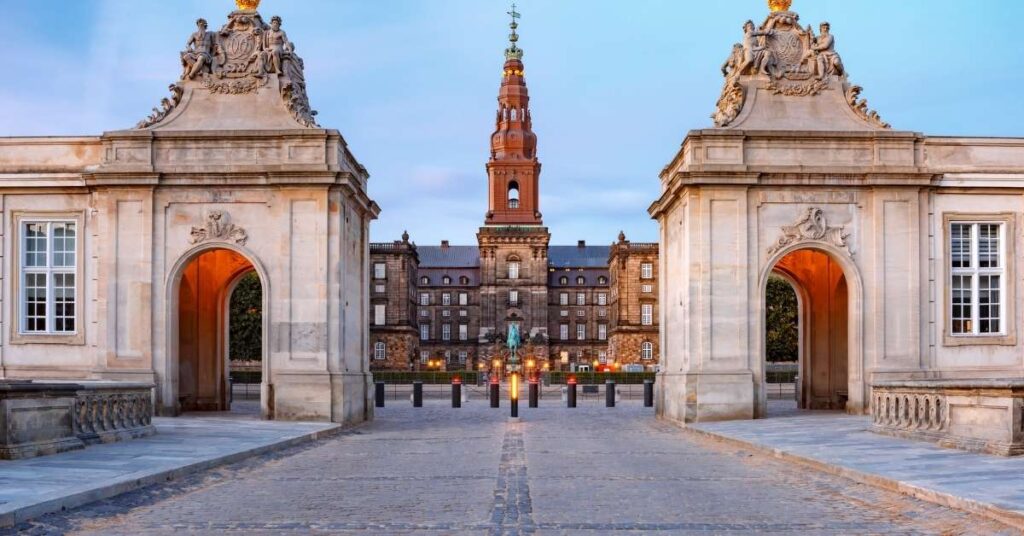
Located in the heart of Copenhagen, Christiansborg Palace is more than just a castle—it’s the seat of the Danish Parliament, the Supreme Court, and the Prime Minister’s Office. The castle’s roots trace back to the 12th century, making it a symbol of Denmark’s enduring governance and history. As an expat, visiting Christiansborg offers a chance to witness Danish statecraft up close, while exploring its royal reception rooms and stables.
2. Rosenborg Castle
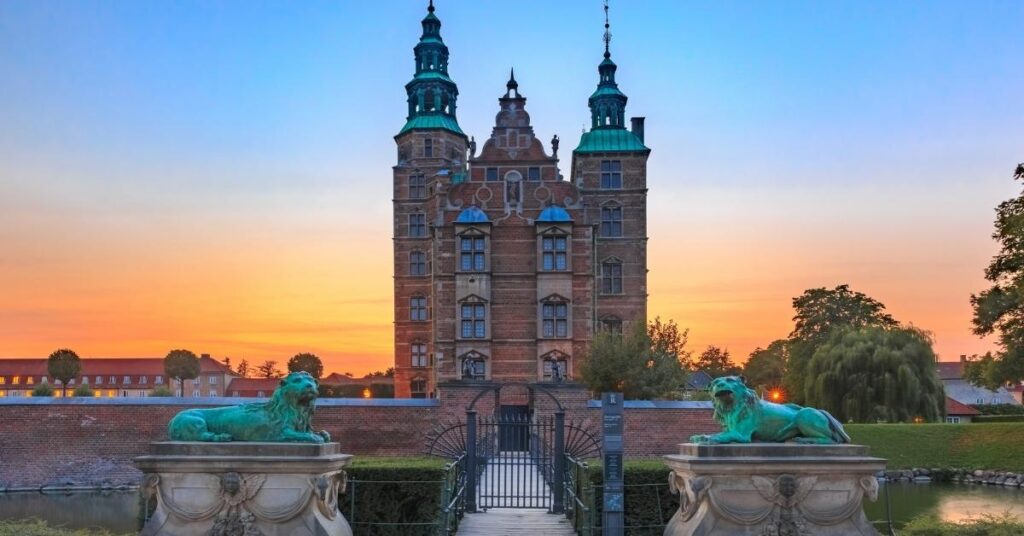
A true Renaissance wonder, Rosenborg Castle is famous for housing the Danish crown jewels. Situated in the King’s Garden in central Copenhagen, the castle was originally built as a summerhouse for King Christian IV. Inside, you’ll find royal regalia, intricate tapestries, and a collection of 400 years of royal treasures. For expats, Rosenborg offers a fascinating look at the grandeur of Danish royalty.
3. Kronborg Castle
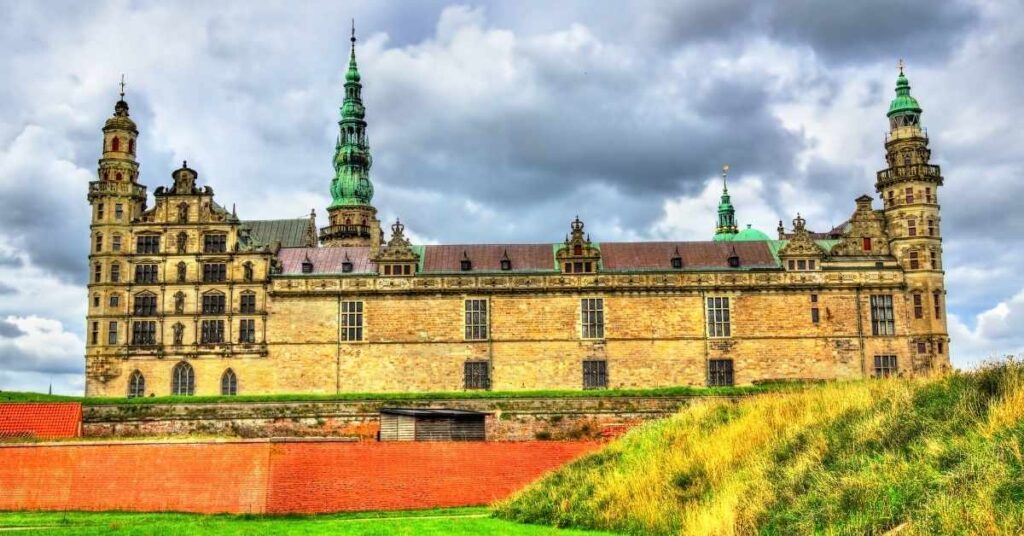
Known worldwide as the setting of Hamlet, Kronborg Castle in Helsingør is a UNESCO World Heritage Site. Its strategic location on the Øresund Strait has made it a key military stronghold throughout history. Expats can explore its long corridors, dungeons, and towering ramparts, while learning about the castle’s significance in Danish and European history.
4. Egeskov Castle

Located on the island of Funen, Egeskov Castle is one of Europe’s best-preserved Renaissance water castles. Surrounded by a beautiful moat and vast gardens, this castle is a haven for expats who love nature and history. Egeskov offers not only a tour of its grand interiors but also outdoor activities like maze gardens, treetop walking, and classic car exhibitions.
5. Frederiksborg Castle
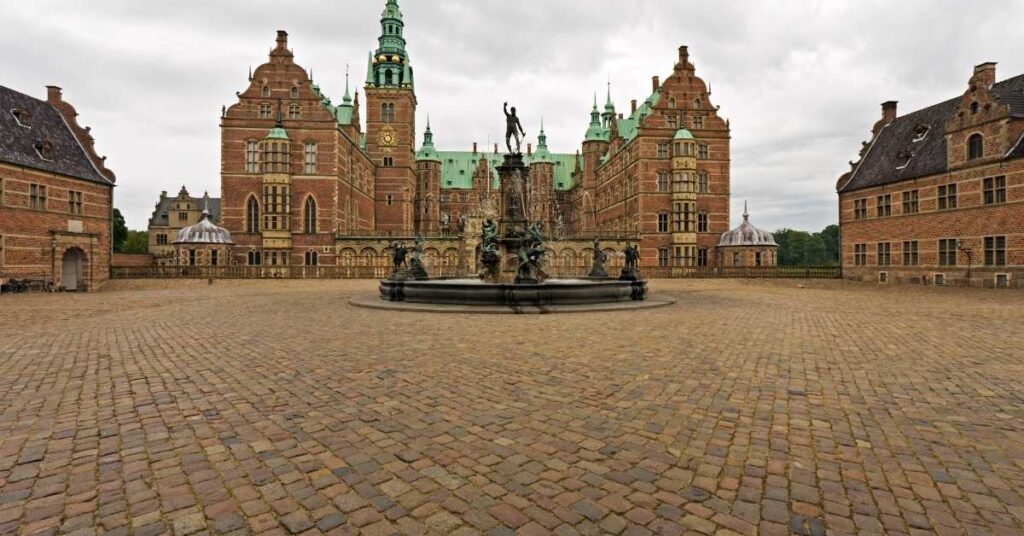
Frederiksborg Castle is the largest Renaissance castle in Scandinavia, set in a stunning location with Baroque gardens and a lake. It now houses the Museum of National History, where expats can learn about the evolution of Denmark through art, portraits, and historical artifacts. The castle’s beautiful interiors and impressive chapel are a testament to Danish royalty’s wealth and influence.
Hidden Gems: Lesser-Known Danish Castles
While the major castles are essential to visit, Denmark is also home to lesser-known castles that offer a more intimate and tranquil experience. These hidden gems are perfect for expats who want to escape the crowds and explore Denmark’s more secluded historical sites.
1. Voergaard Castle
Tucked away in North Jutland, Voergaard Castle is a Renaissance masterpiece with a fascinating and eerie history. It’s said to be one of Denmark’s most haunted castles, and its interiors are filled with priceless art and furniture. Expats who visit can take guided tours through its lavish rooms and learn about the castle’s connections to French nobility.
2. Gavnø Castle
Located on the island of Gavnø, this colourful Baroque castle is famous for its stunning gardens and art collection. The castle is home to the largest private collection of paintings in Denmark, with over 1,000 works spanning centuries. The gardens are a highlight, especially in spring when they bloom with over 500,000 tulips. For expats, Gavnø offers a peaceful retreat filled with art, history, and natural beauty.
3. Dragsholm Castle
Dating back to the 12th century, Dragsholm Castle in Zealand is a mix of medieval and Baroque architecture. Known for its gourmet restaurant and luxury hotel, Dragsholm offers expats the chance to not only explore its historic rooms but also dine and stay overnight. The castle’s spooky history includes tales of ghosts, adding a unique twist to its charming elegance.
These lesser-known castles offer an off-the-beaten-path experience, allowing expats to discover Denmark’s hidden historical treasures without the bustle of larger tourist destinations.
Danish Castles: A Journey Through Time
Danish castles are not just architectural marvels; they are a chronicle of Denmark’s history. From medieval fortresses to renaissance palaces, the evolution of these castles mirrors the country’s social and political transformations.
Medieval Fortifications
Many Danish castles, like Kronborg and Dragsholm, began as military fortresses. These castles were built for defense, with thick walls, moats, and high towers designed to keep invaders at bay. As Denmark shifted from a war-oriented nation to a more peaceful monarchy, these castles evolved into symbols of royal power and prestige.
Renaissance Opulence
The Renaissance period saw Danish castles become more decorative and grand. Castles like Rosenborg and Frederiksborg were designed not just for defense but to showcase the wealth and sophistication of the Danish monarchy. Expats visiting these castles can admire the intricate architecture, elaborate tapestries, and grand halls that reflect this era of opulence.
Preservation and Restoration
Denmark takes great care in preserving its historical landmarks. Many Danish castles have undergone extensive restoration to maintain their original beauty. For expats, seeing these efforts first-hand provides insight into Denmark’s commitment to preserving its cultural heritage. These restorations ensure that future generations can continue to enjoy these iconic structures.
Events and Festivals at Danish Castles

Danish castles are not just relics of the past; they are living parts of Danish culture. Throughout the year, these castles host a variety of events and festivals that give expats the chance to experience Danish traditions up close.
- Christmas Markets: During the holiday season, castles like Kronborg and Rosenborg are transformed into festive markets. Expats can explore the stalls, enjoy mulled wine (gløgg), and shop for traditional Danish crafts and treats.
- Open-Air Concerts: Many castles host summer concerts in their expansive gardens. Frederiksborg and Egeskov castles are known for their open-air performances, where visitors can enjoy live music in a beautiful historic setting.
- Medieval Festivals: Kronborg Castle often hosts medieval-themed events, complete with jousting, markets, and reenactments. These festivals provide a fun and educational way for expats to experience Denmark’s medieval history.
- Historical Tours: Throughout the year, many castles offer guided tours that focus on specific periods of Danish history. Expats can take advantage of these tours to learn about everything from Viking times to the Renaissance.
Attending these events is a great way for expats to engage with Danish culture while enjoying the breathtaking surroundings of these historic castles.
Accommodations in a Danish Castle
For a truly immersive experience, many Danish castles offer accommodations where you can stay overnight and live like royalty. This is a unique opportunity for expats to combine luxury with history and spend the night in a centuries-old castle.
Dragsholm Slot
This castle is not only known for its history but also for its luxury hotel and gourmet restaurant. Guests can dine on Michelin-starred cuisine and sleep in rooms that once housed noble families. It’s an unforgettable way to experience Denmark’s rich history.
Kokkedal Castle
Located just north of Copenhagen, Kokkedal Castle offers a mix of royal grandeur and modern comfort. With its spa, golf course, and stunning parkland, it’s the perfect retreat for expats looking to relax and unwind in a historical setting.
Hvedholm Castle
Set in the beautiful landscape of Funen, Hvedholm Castle offers a regal atmosphere with beautifully decorated rooms and a grand dining hall. Staying at Hvedholm allows expats to enjoy the charm of rural Denmark while basking in the opulence of a 19th-century manor.
Whether for a weekend getaway or a special celebration, staying at a Danish castle offers expats an unforgettable experience that blends history, luxury, and Danish hospitality.
Conclusion
For expats living in Denmark, exploring the country’s castles is more than just a journey through time—it’s a way to connect with Danish culture, history, and traditions. From the grand halls of Christiansborg to the hidden gems like Voergaard, Danish castles provide a unique opportunity to understand the nation’s heritage.
These castles stand as cultural bridges, bringing expats closer to the Danish way of life. Whether attending a festival, exploring Renaissance art, or staying overnight in a historic manor, Danish castles offer a magical experience that enhances any expat’s life in Denmark.
By visiting these castles, expats can truly appreciate the rich tapestry of Denmark’s past and present, making their time in the country even more memorable.
Frequently Asked Questions About Danish Castles
1. What are the must-visit Danish castles for expats?
Some of the must-visit Danish castles include Christiansborg Palace in Copenhagen, Kronborg Castle in Helsingør, Rosenborg Castle in Copenhagen, Frederiksborg Castle in Hillerød, and Egeskov Castle on Funen. These castles offer a mix of history, architecture, and cultural experiences that provide insight into Denmark’s heritage.
2. When is the best time to visit Danish castles?
The best time to visit Danish castles is during the late spring and early autumn. These seasons offer pleasant weather and fewer crowds, making it easier to explore the castles at a leisurely pace. For a quieter experience, weekdays are also a good option.
3. Can I stay overnight in a Danish castle?
Yes, many Danish castles offer accommodations for overnight stays. Castles like Dragsholm Slot, Kokkedal Castle, and Hvedholm Castle allow you to live like royalty while enjoying luxurious amenities. Booking in advance is recommended, especially during peak seasons.
4. Are there any family-friendly events at Danish castles?
Yes, many Danish castles host family-friendly events, especially during the summer. These include open-air concerts, medieval festivals, and Christmas markets. Castles like Egeskov and Kronborg offer outdoor activities, games, and tours that cater to families with children.
5. What can I expect to see at Rosenborg Castle?
Rosenborg Castle houses Denmark’s crown jewels and royal treasures. Inside, you’ll find beautifully preserved rooms with Renaissance-era art, tapestries, and the throne room. The King’s Garden, which surrounds the castle, is also a popular spot for relaxing and picnicking.
6. How much does it cost to visit Danish castles?
Ticket prices vary depending on the castle. For example, entrance to Rosenborg Castle is around 125 DKK, while Kronborg Castle costs around 145 DKK. Some castles also offer discounted tickets for students and seniors, as well as free entry for children under a certain age.
7. Can I attend events or festivals at Danish castles?
Yes, Danish castles frequently host events such as Christmas markets, summer concerts, and historical reenactments. Expats can attend these events to experience Danish culture firsthand. Check each castle’s website or local event listings for up-to-date information on upcoming festivals and activities.
8. Are there guided tours available at Danish castles?
Many Danish castles offer guided tours that provide in-depth historical insights. These tours are available in several languages, including English, making them ideal for expats. Popular castles like Kronborg and Frederiksborg often have daily tours, while smaller castles may require booking in advance.
9. What is the architectural style of Danish castles?
Danish castles showcase a variety of architectural styles, ranging from medieval fortifications to Renaissance and Baroque designs. For example, Kronborg Castle is known for its Renaissance style, while Frederiksborg Castle features elaborate Baroque gardens and interiors.
10. Are Danish castles wheelchair accessible?
Many Danish castles have taken steps to improve accessibility, though older castles with medieval structures can be challenging for those with mobility issues. Check the specific castle’s website for detailed information on accessibility and facilities for visitors with disabilities.
11. What is the significance of Kronborg Castle?
Kronborg Castle is one of Denmark’s most iconic landmarks, known globally as the setting for Shakespeare’s Hamlet. The castle also played a vital role in Denmark’s military history, guarding the narrow strait between Denmark and Sweden. Today, it’s a UNESCO World Heritage Site.
12. How do I get to the major Danish castles from Copenhagen?
Several castles are within easy reach of Copenhagen. Rosenborg and Christiansborg are located in the city centre and can be accessed by walking or public transport. For castles like Frederiksborg, Kronborg, and Egeskov, trains and buses are available, or you can opt for a car rental for added flexibility.
13. Are there any lesser-known castles worth visiting?
Yes, some lesser-known castles like Voergaard, Gavnø, and Dragsholm offer intimate and unique experiences away from the crowds. These castles are ideal for expats looking to explore Denmark’s hidden gems and enjoy a quieter, more personal connection with Danish history.
